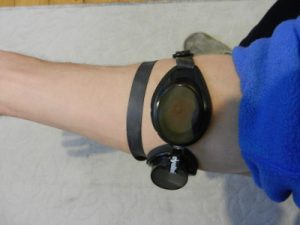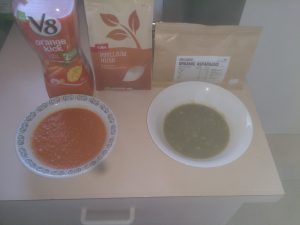Abdominals
Plank Ups: Start in high plank. Bend one arm to bring your elbow and your forearm to the floor. Bring the other arm down so you are in a forearm plank. Push back up to the start position, placing each hand where your elbows were.
Plank Taps: Start in high plank with your feet hip-distance apart. Then tap your left hand to your right shoulder while engaging your core and glutes to keep your hips as still as possible.
Lateral Plank Walks: Start in high plank. Step your right foot and your right hand to right side immediately following with your left foot and your left hand.
Plank Star Jumps: Start in high plank. Keeping your core engaged, jump your feet out wide and back in (like star jumps).
Plank with lifting right arm and left leg, then lifting left arm and right leg.
Plank with arm lifts to the side (90 degrees with the body) without turning torso.
Plank high knee run: in plank, alternately bring one knee to chest, then the other.
Plank knee to same shoulder: in plank, alternately bring left knee to left shoulder, return to plank, bring right knee to right shoulder.
Crocodile walk: from plank, step left foot close to left hand, left knee is close to left shoulder. Step right hand forward. Then step left hand and right foot forward, so the right knee is close to right shoulder. Repeat with right hand and left knee. Stay low, with bent elbows and one knee bent.
Plank knee to opposite elbow or shoulder: in plank, alternately bring one knee under the body to the opposite armpit, return to start, then the other knee to the opposite armpit. Intensification: straighten the leg that crosses under the body, without touching the leg to the ground.
Plank or tabletop side leg lifts: similar to plank knee to shoulder, but straight leg lifted to the side.
Bear pose: from tabletop pose (hands and knees on the ground), lift knees slightly off the ground, so you are standing on hands and toes, with hips and knees bent at 90 degrees.
Crunches: lying on your back, knees and hips bent, feet on the ground, lift torso toward knees, return.
Leg lifts on your back: lying on your back, lift both straight legs without arching the back (lower back stays on the ground). Then lower the legs back down. Repeat.
Supine leg rotations: lying on your back, lift straight legs 30 degrees off the ground, make circles with the legs, keeping the legs together and straight. Lower back stays on the ground, no arching of the back.
Jackknife: lying on your back, arms overhead, bend at the hips to lift both straight arms and straight legs, touch fingers to toes.
Windshield wiper: lying on your back, hips bent 90 degrees, feet touching, keep both shoulders on the ground and rotate from the waist to move both feet to one side to touch the ground, then lift back up. Repeat on the other side.
Chest/pectorals
Push-Ups or clapping push-ups.
One-arm push-ups.
Handstand push-ups.
Push-up into side plank, then back to push-up, then side plank on the other side.
Staggered push-ups: push-ups with one arm placed more forward than the other.
Burpees/ squat thrusts: do a push-up, then jump legs close to hands, then jump up, return to low squat, put hands on the floor, jump legs back to plank. Repeat.
Calves
Calf raises: Stand on one leg, rise up on your toes, return down.
Hamstrings
Low plank or chaturanga leg lifts. Start with hands (or elbows) and feet on the ground, body straight, elbows bent 90 degrees. Lift one leg toward the sky. The leg may be straight or bent. Do not rotate the foot outward, but keep pointing the toes in and up. Keep abdomen tense to lessen the use of the back muscles, focus on lifting with the hamstring instead.
Isometric heel press: stand on one foot, bend the other knee 90 degrees and press the heel up against the hand, keeping the hips straight. Tense the abdominals to discourage using the lower back muscles. Use the hamstring instead.
Quads, glutes, sides of hips
Squats or squat jumps, or one-legged squats.
Forward-backward squat jumps: from a squat, jump forward into a squat, then back to starting position.
Wide-legged squats or wide-legged squat jumps.
Lunges, perhaps adding a front kick after standing up from each lunge.
Lunge jumps: start on left foot and right toes, with the left hip, knee and ankle bent 90 degrees, the right hip straight and the right knee and ankle bent 90 degrees. Jump into the same position on the opposite side: right hip, knee and ankle bent 90 degrees, left hip straight, the left knee and ankle bent 90 degrees.
Lateral lunges: from standing, step wide to the left, bending the left knee, keeping the right leg straight. Step back to standing. May add a leg raise to the side after each lunge.
Curtsy Lunges: from standing, cross one leg in front of the other and do a squat.
Back
Superman: lying on your belly, straight arms pointing above head, lift both arms and straight legs. Keep the legs together.
Locust: lying on your belly, straight arms behind back, fingers interlocked, lift torso and straight legs.
Airplane: lying on your belly, straight arms in a T position to body, lift both arms and both legs. Keep the legs together and straight.
Prone snow angel: lying on your stomach, lift both arms, move straight arms from pointing toward feet to pointing above head, then back toward feet (from locust to airplane to superman pose, then back to airplane and to locust).
Forward bend/ good morning: from standing, bend forward at the hips with a straight back and straight legs, fingers interlocked behind the head. Then stand tall again. Intensification: keep straight arms overhead (in one line with the back) the whole time.
Bridge/ hip raise, or one-legged bridge. In one-legged bridge, the other leg can be straight or bent, parallel to ground or pointing to the sky.
Upward plank: facing the sky, support your weight on hands and heels. Keep arms, legs and body straight, with legs and body forming one line.
Upward plank leg raises: from upward plank, raise one leg from the hip, keeping the knee straight. The other leg and the body still form a straight line.
Ant walk/ crab walk: facing the sky, walk on your hands and feet, knees bent about 90 degrees, elbows almost straight. Keep your hips and back straight.
Obliques/side muscles
Side bend: stand straight, arms straight overhead, elbows straight, fingers interlocked, biceps squeezing the ears. Bend to one side, then stand tall again. To focus on the side muscles, not lower back or abdomen, bend exactly to the side, not forward or back.
Side Plank. Intensification: lift upper leg, perhaps grab toe of upper leg.
Shoulders
Dive bomber/ Hindu push-up/ Downdog-to-chaturanga and return to downdog. Start with hands and toes on the ground, hips bent 90 degrees, legs and arms straight, arms in one line with the back. Bend elbows and move chest between hands until the hips are straight (body and legs form one line) and chest hovers a few cm above ground. Then return to start.
Downdog push-ups/ inverted shoulder press/ pike press. Start with hands and toes on the ground, hips bent 90 degrees, legs and arms straight, arms in one line with the back. Bend elbows so head approaches floor between the hands. Keep hips at 90 degrees, back and neck in one line. Push back to starting position.
Arm circles: standing, straight arms in T position (straight line through both arms), make as small and fast circles with the arms as possible.
Triceps
Narrow push-up: hands close to each other on the ground, elbows brushing sides of torso.
Diamond Push-Up: thumbs and forefingers form a triangle.
Triceps Dip, or one-arm triceps dip: Sit on the ground with your legs in front and your back close to a chair, box or step. Place your palms on the box behind you, fingers facing toward your body. Straighten your arms to lift your legs and butt off the ground, then bend your elbows to lower back down (without letting your butt touch the ground). Keep your heels on the ground, elbows directly behind your body.
Reverse push-up: face the sky, hands and heels on the ground, body and legs in one straight line. Bend the elbows, then push back up until the elbows are straight again. Keep the body and legs straight while doing this.
Back-to-wall push-aways: stand with your back against a wall, feet away from the wall, body and legs in one straight line. Push away from the wall using your elbows or hands.
Warm-ups
Knee lift run on the spot.
Butt kick run, hips straight.
Forward kicks/ can-can, or forward kicks with jumps.
Scissor stepping to the side: from standing, cross left leg in front of the right, then step right leg to the right so the legs are not crossed any more. Then cross the left leg behind the right, then step the right leg to the right. Repeat. Then switch sides.
Forward sprint.
Backward run.
Gallop to the side: one leg steps wide to the side, then the other hops to meet it. Repeat. Then switch sides
Hop on one foot, forward and backward.
The motivation for this list was my inability to find a good ad-free list of bodyweight exercises online. By bodyweight I mean exercises that do not require rubber bands, a chin-up bar, weights or other equipment. Preferably the exercises would only require a floor, not even a wall or a chair, but I included some exercises above that do require these.

